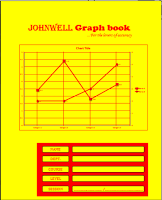Experimental set-up:
You are going to study the various forces acting on a body in equilibrium. As you know from
lectures (or will find out in the near future), a body is in equilibrium (i.e. not accelerating)
when the sum of all the forces acting on it are equal to zero. In this experiment you are going
to study an object with 3 and 4 forces acting on it, and show that the vector sum of those
forces is zero, using both the polygon and component methods (discussed in the analysis
section below). The apparatus you will use will consist of a drawing board and a number of
pulleys on a frame, masses, some twine and an object (in this case a small ring).
.
Figure 6a. Schematic diagram of apparatus Figure 6b. Vector diagram of forces on object
When you initially put the apparatus together and put the masses on the twine, the ring will
move slightly and then come to rest in an equilibrium position. When the ring in at rest, i.e. in
equilibrium, the total force acting on it is zero.
The gravitational force (or weight) exerted on each mass is mg (where g is the acceleration due
to gravity ~ 9.81 m/s2). In figure 6a above there are 3 masses (m1, m2 & m3), and each exerts a
force on the object of size m1g, m2g & m3g, with the forces acting along the direction of the
string connecting the mass to the object. The forces acting on the ring then look like those in
figure 6b.
By taping a piece of graph paper on the drawing board behind the twine and marking the
position of the three pieces of string (by marking 2 points for each piece, one close to the
object and another close to the pulley), and then drawing vectors along these directions with
lengths proportional to the masses (e.g. 1 cm ≡ 100 g) you will have made a vector diagram of
the forces on the object.
You can then use the polygon method or the method of components (discussed in the analysis
section below) to show that the vector sum of these forces is zero.
Procedure:
1. Preparation:
• Tape a sheet of graph paper onto the face of the board.
• Tie three pieces of thread to the ring and pass two of them over the upper pulleys
leaving the third to hang free. Tie a loop at the end of each piece of thread and suspend
a mass hanger from each loop.
2. Starting up:
• Load each mass hanger with masses but keep the ring fairly central on the board.
• With a pencil, mark on the paper the position of each piece of thread by taking a point
at either end.
• Note the masses (m1, m2 & m3) suspended from each thread.
• Remove the graph paper and draw vectors in the direction of the strings, with lengths
directly proportional to the appropriate masses.
3. Making measurements:
• Vary M1, M2 and M3 and repeat this procedure for another different equilibrium
situation.
• Using the third pulley, follow the above procedure with 4 masses.
Note: Each person must submit his or her own set of 4 original vector diagrams on
graph paper, stapled to the answer sheet (part A4 of answer sheet).
4. Data presentation:
• For the first vector diagram you obtained, with 3 masses, use the polygon method to
draw the resultant vector (on the same sheet of graph paper). Measure the length of the
resultant vector
• For the second vector diagram you obtained, again with 3 masses, calculate the x- and ycomponents
of each vector and the x- and y-components of
the resultant vector.
• For the third vector diagram you obtained, this time with 4 masses, once again use the
polygon method to draw the resultant vector (on the same sheet of graph paper).
Measure the length of the resultant vector
• For the fourth vector diagram you obtained, again with 4 masses, calculate the x- and ycomponents
of each vector ) and the x- and y- components of
the resultant vector.
Analysis:
Diagrammatic representation of vectors:
The directional nature of vectors means that a single number cannot describe them. An arrow
is generally used to represent vectors diagrammatically. The length of the arrow is
proportional to the vector magnitude, while the direction is parallel to the vector direction.
This method of representing vectors also allows us to very easily see how vectors add.
The vector A may be represented on a diagram by drawing an arrow the length of which is
proportional to the magnitude of the vector quantity. The arrow is drawn in the direction of
the vector.
Adding vectors:
The resultant of a number of vectors is the single vector which would have the same effect as
all the original vectors together. R = A + B + C means that R is the resultant of the vectors A,
B and C. We can visualise how vectors are added in a geometric manner. We can actually
perform the addition in two ways, either using a mainly geometrical methods (polygon
method) or a more arithmetically based method (component method). The two methods
produce the exact same results.
Polygon Method;
The resultant of two or more vectors may be obtained by drawing them "head-to-tail" (in any
order). The line drawn to complete the triangle or polygon represents the resultant, which is
pointed from the tail of the first vector to the arrow-head of the last vector.


